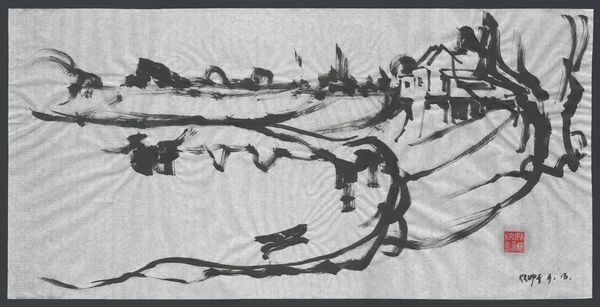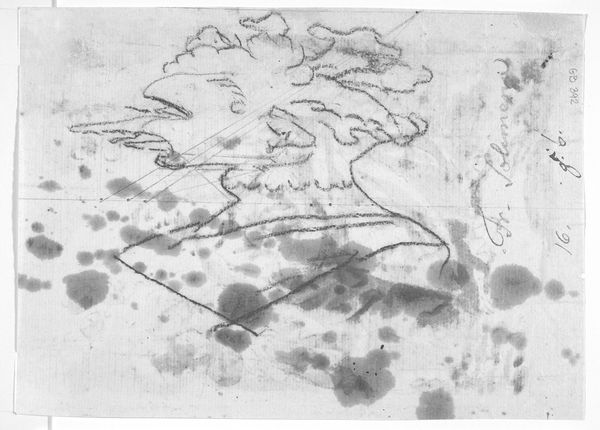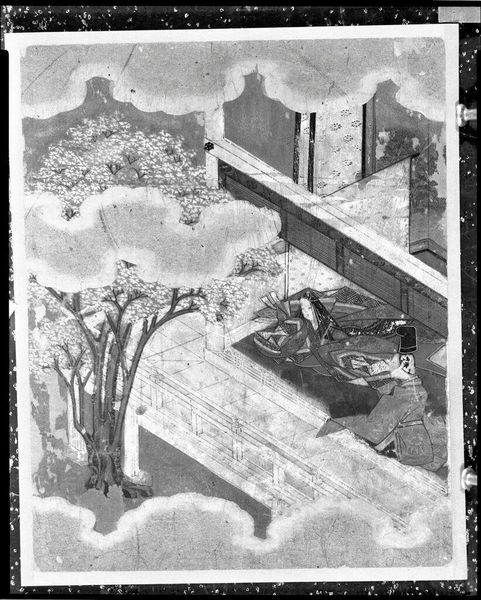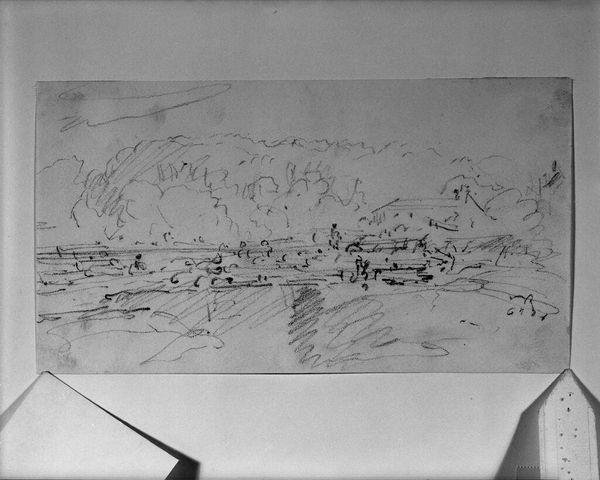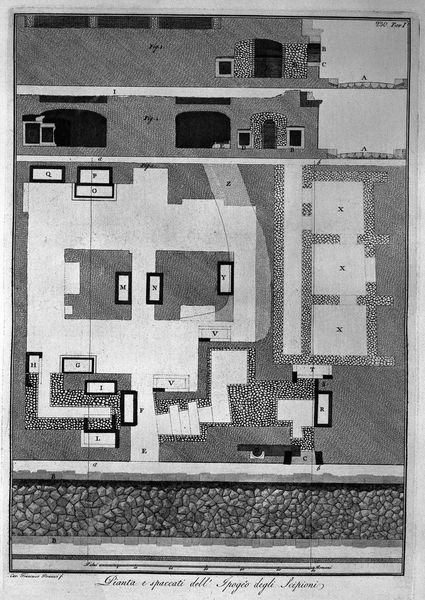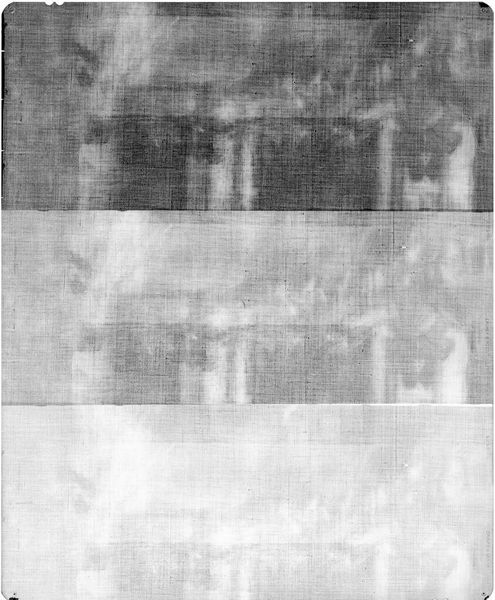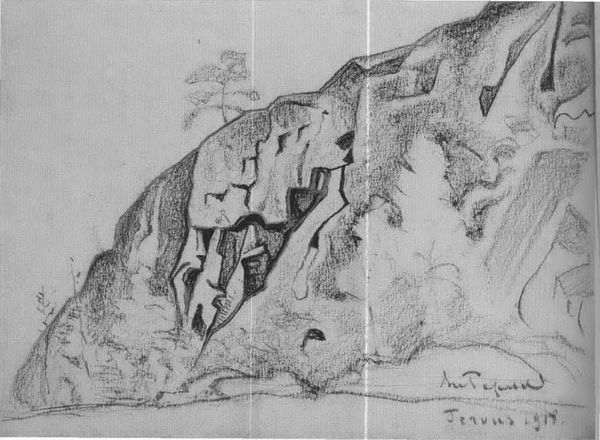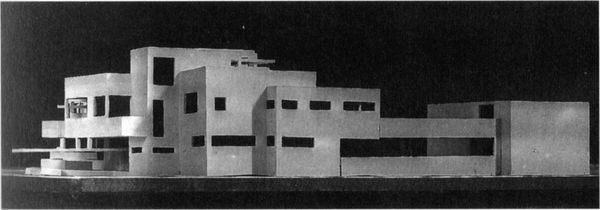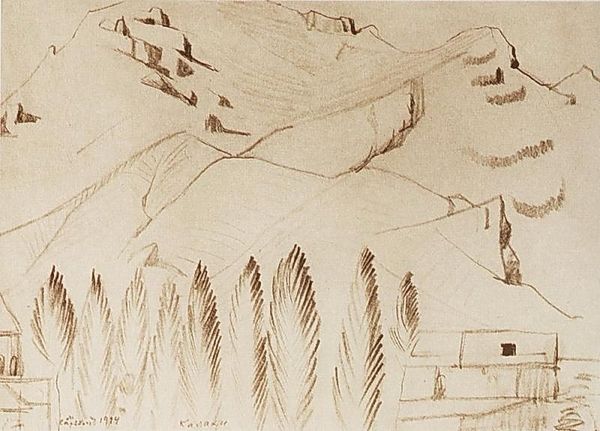
drawing, ink
#
drawing
#
landscape
#
ink
#
hand drawn
#
pen-ink sketch
#
cityscape
#
modernism
Copyright: Creative Commons NonCommercial
Editor: We’re looking at Alfred Freddy Krupa's "Wounded City of Dubrovnik," created in 1996 using ink. It's a stark black and white landscape, quite abstract, that evokes a sense of destruction and loss. How do you interpret this work, particularly given its title? Curator: The title is key. "Wounded City" immediately situates the drawing within the context of the Balkan Wars and the siege of Dubrovnik. The seemingly abstract forms become stand-ins for damaged buildings, a traumatized urban landscape. What looks like blots of ink might represent explosions, the harsh, unfiltered reality of war. Editor: So you see it as a direct response to the conflict? Curator: Absolutely. Krupa, as an artist, is bearing witness. He is not just representing physical damage but also the emotional and cultural trauma inflicted upon a city, and by extension, its people. What do you make of the artistic choice to use black ink only? Editor: It definitely adds to the somber mood. Maybe it symbolizes the darkness and uncertainty of that time? Curator: Precisely. The stark contrast eliminates any romanticism. This wasn't a distant event; it was a brutal assault on European heritage and human lives. This links art directly to social commentary. The fragmented forms perhaps represent the fracturing of identity, community, and historical narratives that war causes. Editor: That gives me a lot to think about, viewing the artwork through that historical and political lens makes it so much more powerful and devastating. I didn't expect to find such depth. Curator: It reminds us that art isn't made in a vacuum, and sometimes, its role is to force us to confront uncomfortable truths.
Comments
No comments
Be the first to comment and join the conversation on the ultimate creative platform.
